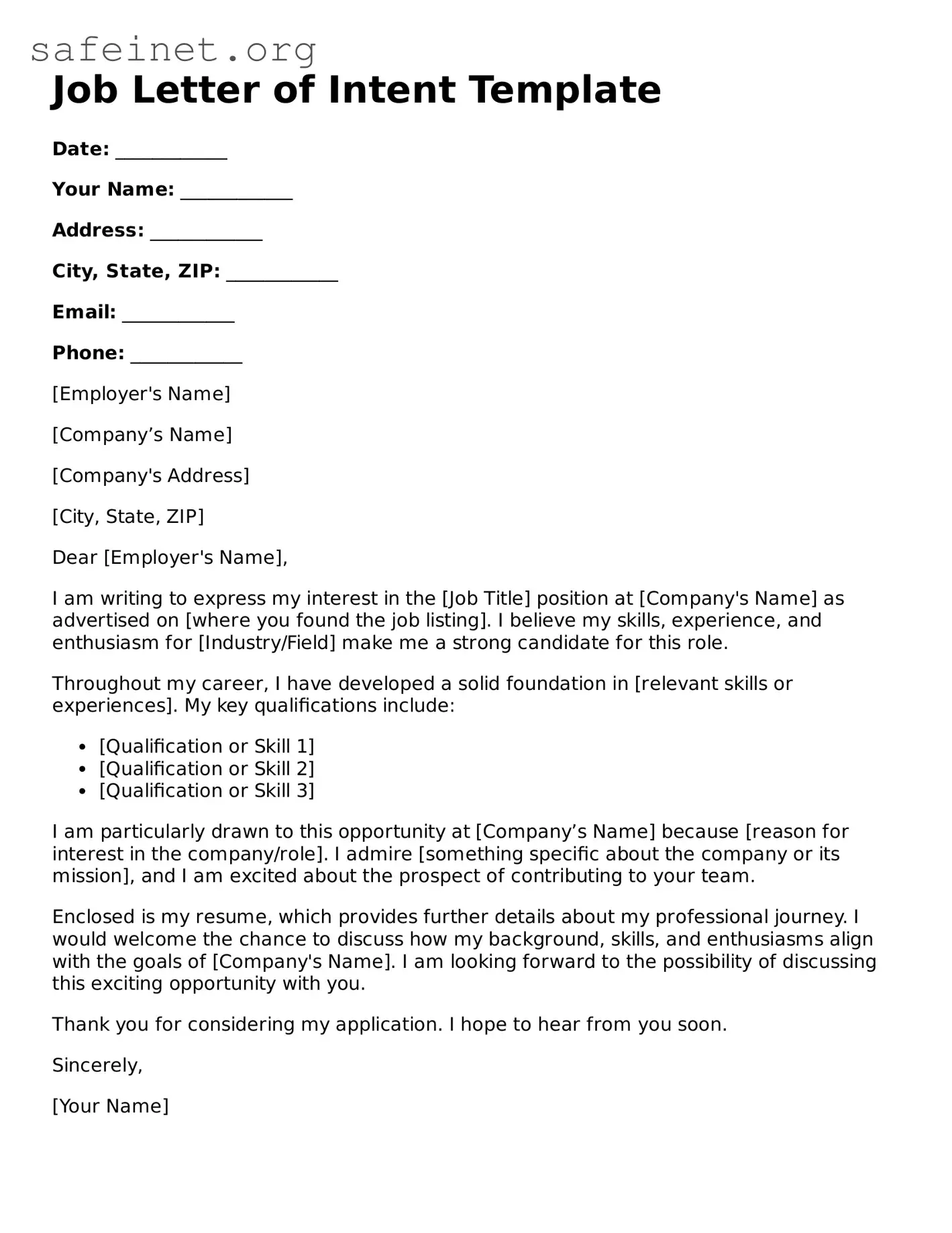What is a Job Letter of Intent form?
A Job Letter of Intent form is a document that expresses an individual's interest in a specific job position within a company. It outlines the candidate's qualifications and intentions to apply, setting the stage for a formal application process. This letter can highlight key skills and experiences relevant to the position, serving as a personal introduction to potential employers.
Who should use a Job Letter of Intent form?
This form can be beneficial for anyone seeking a job, from recent graduates to experienced professionals. If you are interested in a specific role or organization, using this letter to state your interest can help you stand out from the crowd. It’s particularly useful when applying for jobs that haven't been publicly advertised or when contacting a company directly.
What should I include in my Job Letter of Intent form?
Your letter should begin with your contact information followed by the employer’s details. Clearly state the job you are interested in and briefly explain why you are a good fit. Highlight relevant achievements and experiences. Close with a request for a meeting or an interview, demonstrating your eagerness and professionalism. Be concise yet informative.
Is a Job Letter of Intent the same as a cover letter?
While both serve to introduce you to potential employers, they are not the same. A cover letter accompanies a job application and is tailored to that specific job posting. In contrast, a Job Letter of Intent is used when you are expressing interest in a position, often when no formal job listing exists. It is more about intentions than a direct application.
When should I submit a Job Letter of Intent?
Timing can be crucial. If you are interested in a specific company or role, it’s best to submit your letter early, even if no job opening is currently available. This proactive approach shows your enthusiasm for the company and could lead to future job openings or consideration for upcoming positions.
How long should my Job Letter of Intent be?
A Job Letter of Intent is typically one page long. Aim for three to four paragraphs that convey your message while remaining succinct. This length allows you to cover key points without overwhelming the reader. Remember, clarity and focus is essential in making a strong impression.
Can I use a Job Letter of Intent multiple times?
Yes, but it is important to customize each letter for the specific company and role you are applying to. Generic letters may not resonate as well with employers. Tailoring your letter helps to showcase your genuine interest and makes it more relevant to the specific position.
What is the benefit of submitting a Job Letter of Intent?
Submitting this letter can set you apart from other candidates. It demonstrates initiative and enthusiasm, qualities that many employers value. Additionally, it can lead to networking opportunities and may open doors even if a position is not currently available. It shows that you are taking active steps in your career progression.
Should I follow up after submitting my Job Letter of Intent?
Yes, follow-up is a good strategy. Sending a polite email or making a call a week or two after submitting your letter shows your continued interest in the position. It can also help reinforce your eagerness to join the company and keep you on the employer's radar.
